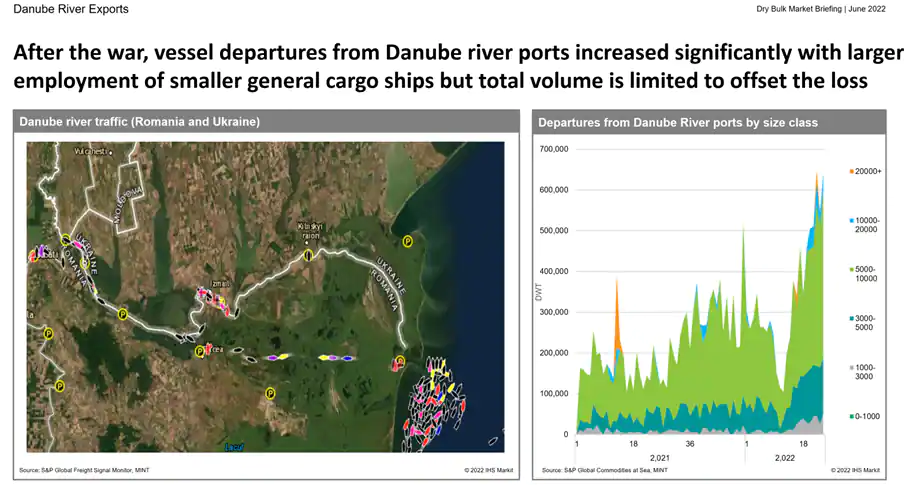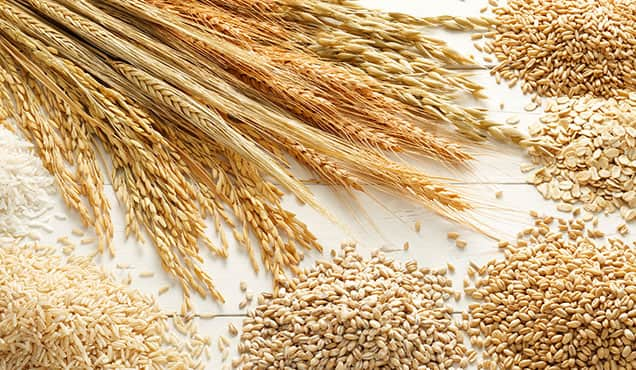The Ukrainian supply chain issue will remain the main
upside risk to food inflation in the coming months even with
significant increase in shipments from Danube ports; total volume
is too small to offset the loss of cargo from Ukraine.
Following the inflation and food crisis, there are several
discussions on how to export or move the Ukrainian grain, and other
cargo. We have already seen a significant increase in shipments
from Danube River ports in Ukraine and Romania. However, most of
the shipments are done by small ships less than 10,000 dwt,
therefore the total volume is too small to offset the loss of the
cargo, at least for now.
Recent news about silos on the borders with Ukraine to use
inland transportation more efficiently is gaining more attention
now. However, in our view, it will take months to procure
equipment, move it into place, construct, and make it
operational.
Therefore, the grain volume during the Black Sea grain season
starting from the third quarter will be fairly limited and the
shortage of world grain, especially wheat, is expected to continue
in the near term. This supply chain issue will remain the main
upside risks to food inflation in the coming months.
-
Following the Russia-Ukraine war, dry bulk and general cargo
vessel (which can carry grain cargo) departures from Ukrainian and
Romanian Danube River ports have increased by 53% from a month ago
to 1.8 million deadweight tons in May 2022 with larger employment
of small general cargo ships. However, total volume is limited to
offset the loss of Ukrainian cargo. Combined capacity of dry bulk
and general cargo ship departures from Ukraine has decreased by 92%
from year-ago level (10 million deadweight) to below 1 million
deadweight tons.
- Transporting Ukraine’s agricultural products by rail to ports
in Romania is costly and time consuming; The railway border
crossings have limited capacity for rail wheel replacement, as
Ukraine rail (1,520 mm gauge) infrastructure links to Russia rather
than Romania (1,435 mm gauge).
- Temporary silos built along the border with Ukraine would
increase export volume via alternative ports including Danube River
ports but not significant in the near term since silos on the
borders will take months to procure equipment, move it into place,
construct, and make it operational, according to S&P Global
Agribusiness intelligence team.

For more insight subscribe to our
complimentary commodity analytics newsletter
This article was published by S&P Global Market Intelligence and not by S&P Global Ratings, which is a separately managed division of S&P Global.


